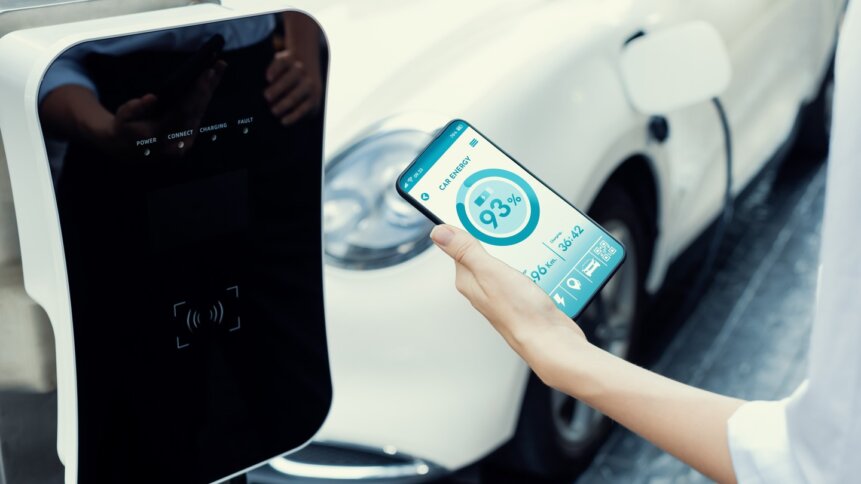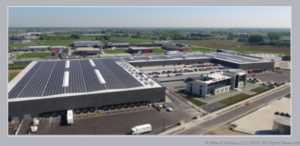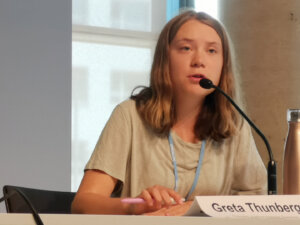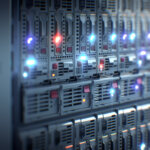Data center energy and data understanding

|
Getting your Trinity Audio player ready...
|
• Data center energy efficiency depends on data understanding.
• Knowing what and where your data is lets you store it more efficiently.
• Tools exist to help you make more business- and planet-friendly choices.
The world right now finds itself in a conflict of interests. On the one hand it needs bigger, better, faster, and more data centers to enable both current world-changing technologies and ways of working. And on the other, the planet itself is sweating up literal storms as a result of man-made climate change and an overbalanced carbon cycle – meaning we need to reduce our data center energy demands and carbon emissions significantly if, a generation from now, data centers are going to worth the ground they’re sited on.
In Part 1 of this article, we sat down with Gary Lyng and Ian Clatworthy, VP Product Solutions Marketing and Director of Data Platform Product Marketing respectively at Hitachi Vantara, a Hitachi subsidiary specializing in data storage and analytics, to explore ways in which it’s possible to minimize both data center energy needs and data center carbon costs, through circular economics, and in particular reducing energy needs and emissions in all three of the “scopes” by which such emissions are classified.
Towards the end of Part 1, Ian mentioned that there is a distinct shift in the demands of clients for data center services – and that it’s moving fast.
While a handful of heartbeats ago, sustainability was a “nice-to-have” element, now, companies are putting it front and center in their reasons to spend a data center buck.
But he added that companies are also keen now to “understand their data” – and where they should, and shouldn’t be putting it.
That in itself feeds into data center energy costs, because every time you move an item of data in a data center – or to, or from a data center – it actually costs a lot more than you might imagine in terms of energy to do. So increasing your knowledge of data, storage, and strategy has almost as much to do with reducing your data energy usage and your data-based carbon footprint.
While we had him in the chair, we asked Ian to expand on the critical value of data understanding in the fight to green a modern data center.
IC:
If you you’ve got tons of data, and you either don’t know what all of it is, or what’s there, you don’t know what you’re storing.
But the underlying assumption in that case is that you have to store everything on the most secure – and expensive – data storage level.
THQ:
Because otherwise you run the risk of compromising your whole company.
IC:
Right. But that makes it very difficult to make any kind of smart data storage and data location choices. It’s a blanket decision to protect everything.
It’s not going to surprise you that we have s click data ops platform, is it?
THQ:
In Part 1, you hit us with a geothermal self-supporting data center, so no, not really.

The self-sustaining data center – the way of the future?
IC:
Well, with our data ops platform, we can get visibility over all the data, put it in the right place, offload it where necessary into a long-term retention solution on a content platform, dispose of it if it’s no longer either useful or necessary, put all the GDPR-pertinent data in one place, and so on. But what’s key here is understanding that data that’s actually installed on the platforms is enormously important.
And that comes back down to when you look at some of the challenges around data center energy and emissions, people will go, “Alright, what’s my challenge?”
They’ll look at the very last year and the next number of years, the top CIO priorities, and they call it achieving sustainability.
And in a lot of cases, people don’t know where to start. What’s their roadmap? Or what’s their journey towards a roadmap? What are the things they can start doing now, in terms of levels of process and practices?
Ultimately, what can they look to replace, in terms of vendors and in terms of technology to achieve the level of efficiency they need to call it real sustainability?
People are really looking for a blueprint, a guide, to how to reduce their data center energy expenditure and their carbon emission footprint. They actively want best practices in for themselves and their key partners.
THQ:
So customers are really starting to get it?
IC:
Yeah, definitely. They’re starting to see that if they’re not sustainable, on the one hand, they’re going to start to lose business. But it goes deeper than that. We’re starting to really see change because people are bringing their personal sense of self-governance and responsibility to work with them.
YOU MIGHT LIKE

Scope 3 data and the growth of virtuous chains
THQ:
How is that manifesting?
IC:
I think the level of awareness is higher than it used to be. People in their own daily lives are getting increasingly passionate about recycling, the drive towards electric cars and minimal energy waste (because of rising fuel prices as much as any ecological concerns).
And they’re not suddenly switching those concerns off when they come to work. So the sustainability mindset is spilling over into work, and they’re asking more questions – why are we not using a sustainable power provider, and so on.
THQ:
Bringing a consumer mindset to a business context?

Greta Thunberg, voice of an eco-action movement, frequently lambasts carbon-heavy industries like data centers. Source: Jean-Philippe LACOUR / AFP
IC:
Absolutely. Exactly that.
GL:
Last year in California, we had rolling blackouts. And that’s quite typical when the temperatures start going over 100. So PG&E, Pacific Gas and Electric, will do either planned maintenance, saying “You’ll have no power today, people, it’s a hundred degrees, but we just turned off your AC.”
Which is important to factor in, in terms of data center energy and disaster recovery, but also helps make people aware of power as an issue that’s on their radar view of the wider world.
We can essentially say “We’ve got high cost, high power consumption going on in one state or one country. Let me roll that over and bring up another state or another country, that’s got much lower power – Texas being one of the most efficient states in the US.

Green data centers – big business, and good for the planet.
There are countries around the world that are more energy-efficient than others. But that ability to switch from one power source to another is one of the growing technologies that are increasingly available to lower data center energy costs.
IC:
The first part of all that is visualizing your CO2. And we can provide a portal so customers can fully understand their own CO2 impact. And that’s not just storage, that could be across your entire data center.
Knowledge is power. Knowledge about power is even better.
From our software side, we have that ability to let customers see what their data center energy cost and their CO2 impact is right now. The next generation of technology that’s coming will give us the underclocking capability we spoke about in Part 1.
But we’re looking at true decarbonization of the data center. And that’s really having a CO2-aware infrastructure, which means that we can automatically migrate or move workloads between data centers, depending on their location and depending on the CO2 impact of moving them.
We can do that non-disruptively, without any impact to the customer. So it’s really, really important to get those insights, to understand where we are locally, and actively move that data.
THQ:
Those insights, we’re assuming, are exclusively for Scope 1 and 2?
IC:
Yes, at the moment, they’re limited to Scope 1 and 2, and we’re using live telemetry to do get those insights. But we also have a bit of an unfair advantage, in that we own a power company.
THQ:
Yyyyyes, we can see that would be something of an advantage, certainly.
IC:
Hitachi ABB power grids can give us live information around CO2. So we do have that ability to provide insights that other vendors don’t have, which is important for us. We understand the power grid, we understand where the power is coming from, and where the most efficient place is for each customer to place their data.
We’ll see more of that data-driven data management and hosting as we move into the era of automated, consumable platform infrastructure, which will bring customers the ability to be increasingly self-aware.
CO2 awareness is an absolutely huge part of that as a sort of top three priority, as we move into the next generation of products and solutions for responsible, energy-efficient, carbon-lite data centers.









